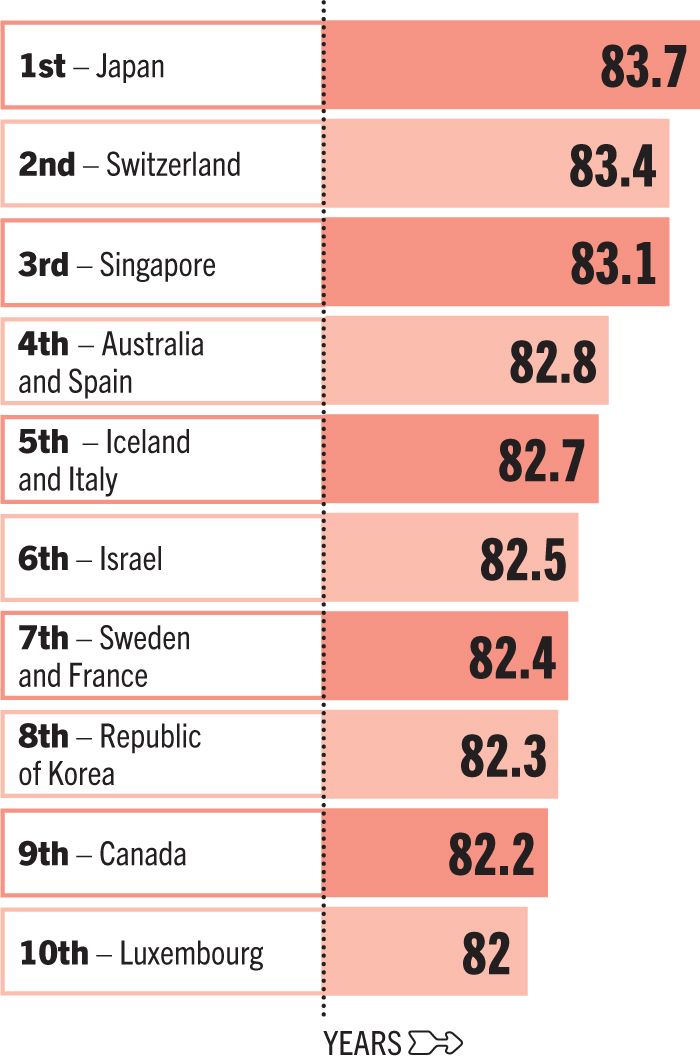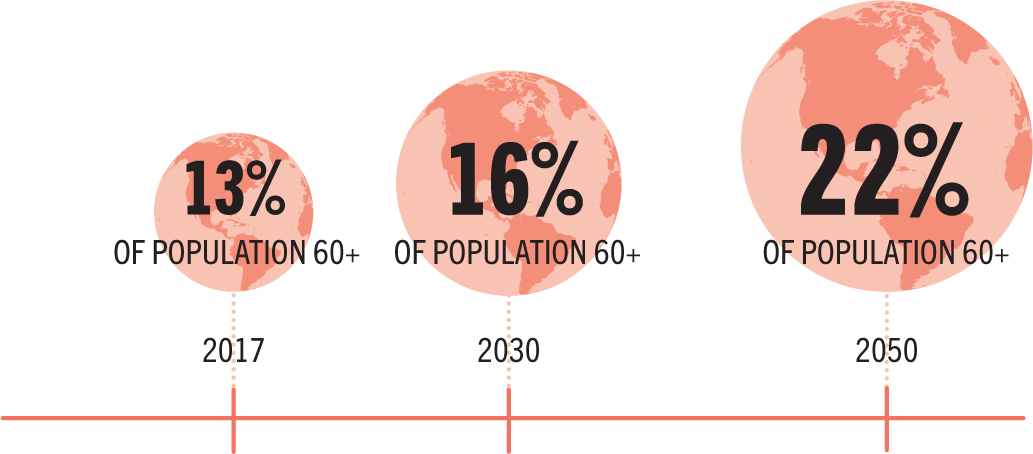
Who lives the longest in the world?
This chart shows the countries with the top 10 highest life expectancies, according to the WHO. Diet and eating habits can play a significant role in longevity, as well as environment, healthcare, and lifestyle.
Look at the countries with the longest life expectancies and you’ll find a diverse range. It’s a similar story when you compare those with the greatest proportions of centenarians. The reasons are many and varied, but research shows that diet and eating habits play a key role, and some communities and areas of the world are particularly significant.

Who lives the longest in the world?
This chart shows the countries with the top 10 highest life expectancies, according to the WHO. Diet and eating habits can play a significant role in longevity, as well as environment, healthcare, and lifestyle.

SEVENTH-DAY ADVENTISTS
Studies have shown members of this Christian denomination from California have better health and higher life expectancy than the average American (which ranks 31st). Much of the advantage in this self-contained group can be attributed to their mainly plant-based eating.
| What they eat: | What they limit: | Eating habits: |
|
• at least nine servings of fruit and vegetables per day • lots of pulses, nuts, and seeds • wholegrains • plant-based milks • small amounts of eggs and low-fat dairy • some fish. |
• red meat and poultry • fatty, sugary, and processed foods, and those with a lot of additives • alcohol (93 per cent reported to be tee-total) • drinks containing caffeine. |
• a mainly vegetarian diet is promoted for bodily health • gluttony and excess, even of good things, are discouraged • meals are appreciated and food is respected. |

The world’s ageing population
The United Nations has projected that the percentage of those aged 60 and over will almost double by 2050. It’s never been more important to eat for a healthier long life.
NORDIC NATIONS
Scandinavian countries rank highly in the life expectancy stakes–Sweden, Norway, Denmark, Finland, and Iceland sit in the top 30. While healthcare is key, diet also has a part to play. Long-term studies have linked traditional Nordic diets (wholegrain bread, fish, cabbage, oats, root vegetables, and fruit) to healthier and longer lives.
| What they eat: | What they limit: | Eating habits: |
|
• wholegrains (rye, oats, and barley) • leafy greens, root veg, peas and beans, seaweed, and mushrooms • fruit, especially berries • nuts • oily fish • rapeseed oil. |
• red meat, except for small amounts of game meat • processed foods (although fish products are often dried, smoked, salted, or pickled). |
• breakfast tends to be a good-sized meal with some protein • families eat together at the table • on-the-go snacking is rare as food is expensive, discouraging impulse buys. |
MEDITERRANEAN
Many of the countries bordering the Mediterranean boast long life expectancies. Sardinia and the Greek island of Ikaria are known for exceptional longevity, with a high proportion of adults living to 90 or more. Here, traditional diets feature lots of “good” fats, fish, wholegrains, pulses, and fresh fruit and veg.
| What they eat: | What they limit: | Eating habits: |
|
• vegetables, such as tomatoes and avocados • fruits, such as grapes and figs • beans, lentils, and chickpeas • oily fish and shellfish • nuts • olive oil • herbs and garlic. |
• red meat • butter • processed foods, and foods high in fat and sugar • red wine, eggs, and dairy are important but limited to small amounts. |
• food is considered one of life’s great pleasures • home cooking is common • mealtimes are family affairs, where everyone eats together at the table. |
53%
drop in the risk of Alzheimer’s disease in those who follow a Mediterranean diet.
JAPAN
Japanese people are the longest-living in the world and the island of Okinawa, especially, is famous for its wealth of centenarians. Eating habits across Japan remain unique when compared with many other parts of the world and are thought to make a major contribution to the nation’s longevity.
| What they eat: | What they limit: | Eating habits: |
|
• rice and noodles • leafy greens, root veg, mushrooms, and beansprouts • seaweed • soya products • plenty of fish, including oily fish • fermented foods • green tea. |
• meat–small amounts of pork and poultry are eaten occasionally • butter • dairy products • processed foods that are high in fat and sugar. |
• Okinawans follow a mantra of “hara hachi bu”: eating until 80 per cent full • breakfast is often the largest meal, involving hot food with protein and vegetables. |
JAPANESE WOMEN LIVE 6.3 YEARS LONGER THAN MEN

Life expectancy – the gender divide
In every country, women live longer than men; women are more health conscious and biology helps, too. And in Japan, for instance, a diet rich in soya, fish, and green tea provides a powerful combination of nutrients for longevity.

Top 20 nations for centenarians
Diet has a part to play in reaching old age, as Japan’s, Mediterranean, and Nordic countries’ rankings show; estimates compiled by the UN.